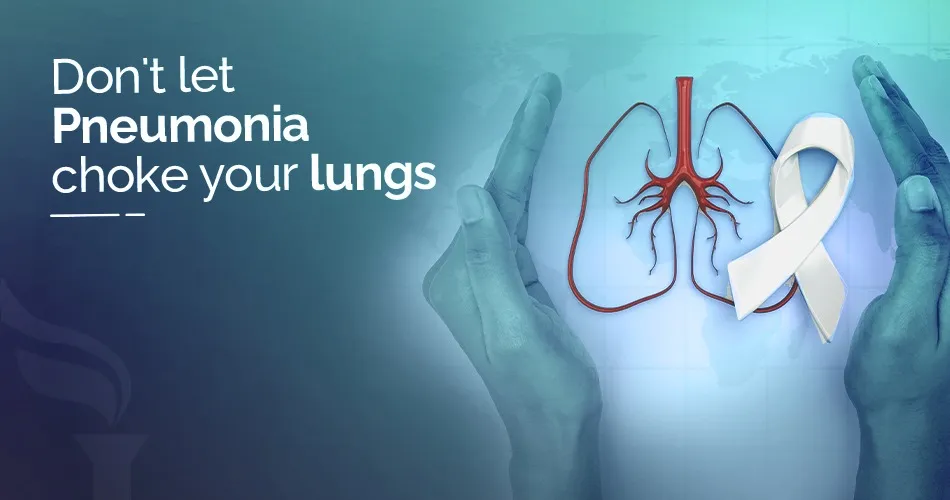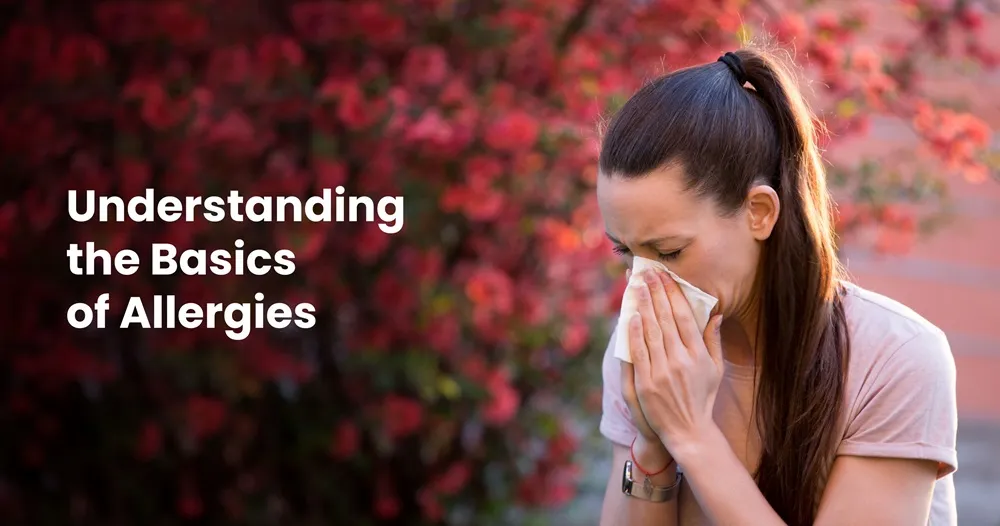Understanding Pneumonia: Symptoms, Diagnosis & Causes
Nov 14, 2023

Pneumonia is a deadly respiratory infection that affects millions of people around the world. It can be caused by a number of factors, including germs, viruses, and even bad air quality. In this blog, we will look at the causes, symptoms, and diagnosis of pneumonia, as well as the significant impact of poor air quality.
Causes of Pneumonia
- Pneumonia can be caused by different infections, the most common being:
- Bacteria: Streptococcus pneumoniae, Haemophilus influenzae, and Mycoplasma pneumoniae are some of the common bacterial culprits. They usually occur when body is weakened due to illness.
- Viruses: Severe viruses like Respiratory Syncytial Virus (RSV), and COVID-19 are viral infections that directly attack lungs and can lead to pneumonia.
- Fungi: In rare cases, fungi such as Pneumocystis jiroveci can trigger pneumonia, without causing any symptoms.
- Chemical Irritants: Exposure to certain chemicals or toxic gases can also lead to pneumonia, and this is where the role of air quality comes into play.
Symptoms of Pneumonia
- Pneumonia manifests with a range of symptoms, which can vary in severity. Common signs include:
- Cough: A persistent cough with mucus, which can be green, yellow, or bloody.
- Fever: High fever with chills and sweating.
- Shortness of
 Breath: Rapid, shallow breathing and difficulty in breathing while walking.
Breath: Rapid, shallow breathing and difficulty in breathing while walking. - Chest Pain: Sharp or stabbing chest pain during coughing or deep breaths.
- Fatigue: Feeling extremely tired and weak even when one is resting whole day.
Diagnosing Pneumonia
- A healthcare provider can diagnose pneumonia through a combination of methods:
- Physical Examination: The doctor will listen to your lungs using a stethoscope to check for abnormal sounds.
- Chest X-ray: An X-ray image can reveal the presence and extent of lung inflammation.
- Blood Tests: Blood samples can help identify the causative agent, be it bacteria or viruses.
- Sputum Test: Analyzing mucus from the lungs can identify the specific pathogen.
The Impact of Poor Air Quality
- Chemical Pollutants: Exposure to pollutants like nitrogen dioxide (NO2) and sulfur dioxide (SO2) can damage lung tissue and compromise the immune system's ability to fight off infections.
- Allergens: Airborne allergens, such as pollen or mold spores, can increase the risk of pneumonia, especially in individuals with pre-existing lung issues.
- Indoor Air Quality: Poor ventilation, smoking, and the use of solid fuels for heating or cooking can lead to indoor air pollution, further increasing the risk of pneumonia.
One often-overlooked aspect of pneumonia is its connection to poor air quality. Air pollution, both indoor and outdoor, can significantly increase the risk of respiratory infections like pneumonia. Here's how:
Conclusion
Pneumonia is a severe respiratory infection caused by bacteria, viruses, and exposure to poor air quality. Understanding the risk factors, symptoms, and methods for diagnosis is critical for early discovery and treatment.
Moreover, improving air quality through pollution control measures and better indoor ventilation is crucial in reducing the burden of pneumonia and other respiratory diseases. Your health and well-being depend on the air you breathe, so taking steps to ensure clean, fresh air is vital for preventing pneumonia and maintaining good respiratory health.
Related Blog Post
Blog Categories
- Child Health
- Mens Health
- Women's Health
- Mental Health
- Health Myths & Facts
- Fitness
- Nutrition/Recipes
- Remedies
- Weight Management
- Stress Management
- Health Supplements
- Addiction Management
- Disease Management
- Allergy
- Anemia
- Arthritis
- Asthma
- Autoimmune Diseases
- Blood Pressure
- Cancer
- Deficiencies
- Dengue/Malaria/Chikungunya
- Diabetes
- Eye Problems
- Heart Diseases
- Hepatitis
- HIV/AIDS/STD
- Hormonal Imbalance
- Infection/Flu/Viral
- Kidney
- Liver
- Menstrual Problems
- Pregnancy
- Skin & Hair Problems
- Stomach Ailments
- Thyroid
- Others
- Health Checkups
- Diagnostics/Pathology
- Lifestyle & Wellness
- Covid
- Medical Tests
- Cholesterol
- Health Tips
- Parent Care/Old Age
- Lungs
- Food Intolerance








